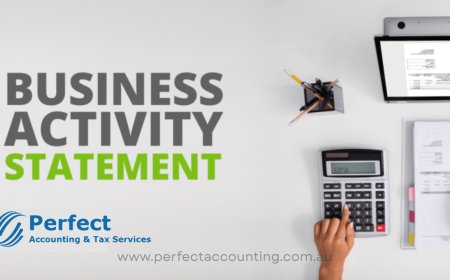Mutual Fund Deals: How to Track Institutional Investments and Strengthen Your Portfolio
In stock markets, not all trades are created equal. A seasoned investor knows that retail moves often follow institutional cues. Among the most revealing of these cues are mutual fund deals

In stock markets, not all trades are created equal. A seasoned investor knows that retail moves often follow institutional cues. Among the most revealing of these cues are mutual fund deals—large transactions by professionally managed funds that can signal confidence, caution, or a shift in strategy.
When mutual funds, backed by research teams and industry analysts, make large moves in a stock, it is rarely random. These trades are transparent, trackable, and rich with meaning. Understanding mutual fund deals can offer you a rare window into the high-level thinking that drives long-term market direction.
In this article, we'll explore what mutual fund deals are, how they can guide retail investors, where to track them, and how to extract actionable insights from these institutional transactions.
What Are Mutual Fund Deals?
Mutual fund deals refer to significant trades—either buy or sell—executed by mutual fund houses in the equity markets. These usually occur in two major formats:
-
Bulk Deals: When a fund buys or sells more than 0.5% of a listed company's equity in one day.
-
Block Deals: Large trades above ₹5 crore negotiated between two parties, conducted in a special trading window.
Unlike speculative trading, these deals are typically strategic and long-term. Mutual funds operate with a goal to deliver consistent returns for their investors. That means these transactions are guided by deep research and risk-adjusted forecasting.
Why Should Retail Investors Track Mutual Fund Deals?
There’s a reason institutional activity gets attention: it’s often predictive. Mutual funds are known for their disciplined approach to investing. When they act, they do so with high conviction. Tracking their moves helps in several ways:
-
Early Signal Detection: Mutual funds might accumulate a stock before its value is widely recognized in the market.
-
Strategic Alignment: By aligning with institutional buying, retail investors can make better-informed decisions.
-
Sector Rotation Visibility: Mutual fund deals show which sectors funds are entering or exiting.
-
Improved Entry/Exit Timing: Understanding fund behavior helps you refine your own entry or exit points.
Where to Track Mutual Fund Deals
Mutual fund deals are publicly disclosed by the exchanges. However, sifting through exchange filings can be time-consuming. A more efficient way is to use platforms like mutual fund deals, which provide:
-
Stock name
-
Transaction type (Buy/Sell)
-
Quantity traded
-
Mutual fund name
-
Trade price
These platforms aggregate deal information daily and display it in a clean, searchable format, making institutional analysis easier for individual investors.
How to Interpret Mutual Fund Deals
Not every deal is an opportunity. Here’s how to filter and extract useful meaning:
1. Look for Repetition
If the same mutual fund appears buying a stock repeatedly, it may be building a strategic position.
2. Monitor Volume Trends
Unusual volumes following a mutual fund deal often suggest accumulation or distribution phases.
3. Compare with Market Behavior
If a stock is flat but witnessing bulk purchases by funds, it may be in stealth accumulation mode.
4. Fund Quality Matters
Transactions from top-performing mutual funds carry more weight. If a fund with a strong track record enters a stock, it signals trust in that company’s future.
Sectoral Preferences and Deal Patterns
Mutual fund activity often shifts with macroeconomic cycles. By observing their deal patterns, investors can understand where institutional money is flowing.
-
During Economic Growth: Funds prefer cyclical sectors like auto, capital goods, real estate.
-
During Recession or Slowdown: They shift to defensive sectors such as FMCG, pharma, utilities.
-
During Interest Rate Adjustments: Banking and NBFCs either see inflows or outflows depending on rate movement.
Following these themes through deal data allows retail investors to adjust portfolios proactively.
Real-World Example: From Mutual Fund Deal to Investment Opportunity
Let’s consider a mid-cap IT services company. You observe that three mutual funds have made large buys over the past 10 days. There’s been no major price move or breaking news.
This behavior typically points to:
-
Fund managers anticipating strong quarterly earnings.
-
Long-term contract wins or export tailwinds.
-
Sectoral rerating based on macro trends like AI or cloud adoption.
If you enter based on this pattern and validate the fundamentals, you stand to benefit from a price breakout once the broader market catches on.
Dos and Don’ts of Following Mutual Fund Deals
Dos:
-
Use deal data to build watchlists.
-
Validate stocks with strong fundamentals.
-
Monitor for multiple institutional entries.
-
Check technical charts to plan entries.
Don’ts:
-
Don’t buy just because a fund did.
-
Don’t ignore your own risk appetite.
-
Don’t follow every single deal without context.
-
Don’t assume fund selling is always negative—it could be rebalancing.
Long-Term Wealth Creation via Institutional Signals
Mutual funds invest with horizons of 1–3 years or more. Their goal is capital appreciation and consistency, not quick profits. This makes their deal behavior highly relevant for investors seeking:
-
Long-term compounders
-
Value picks with institutional backing
-
Growth stocks with sustainable upside
In fact, many multibaggers of the past decade saw significant mutual fund interest well before their breakout.
How Mutual Fund Deals Differ from Other Market Activity
Compared to promoters, FIIs, or insiders, mutual fund deals are:
-
More Transparent: They’re regulated, reported daily, and accessible to the public.
-
More Conservative: They avoid overexposure or speculative bets.
-
More Disciplined: Fund mandates prevent panic-driven trades, lending stability to their decisions.
This reliability makes them a powerful secondary tool for retail investors building medium- to long-term portfolios.
Integrating Mutual Fund Deal Tracking into Your Routine
Here's how to build a simple daily habit around deal tracking:
-
Morning Review: Check mutual fund deals for the last day’s bulk and block deals.
-
Shortlist Stocks: Mark stocks with multiple buys or deals from respected fund houses.
-
Fundamental Filter: Analyze revenue, net profit, PE ratio, debt, and ROE.
-
Set Technical Alerts: Use breakout or volume-based triggers to plan entries.
-
Track Weekly Movement: See if the stock is gaining attention across other investor categories.
This routine, when followed consistently, helps reduce noise and enhances conviction.
Mutual Fund Sell-Offs: Should You Be Worried?
Not all selling is negative. Sometimes, fund redemptions, sectoral reallocation, or internal limits prompt a sell. But if:
-
Multiple funds are selling a stock over time,
-
Volumes are high,
-
The stock breaks key support levels,
…it may be time to reassess your position. Combining deal tracking with technical and fundamental research ensures you make decisions rationally—not reactively.
Regulatory Compliance Makes Tracking Trustworthy
Mutual fund deals fall under SEBI’s disclosure requirements, which ensures:
-
Real-time transparency
-
No manipulation or insider misuse
-
Fair access to data for all investor categories
This regulation gives you a legally sound and ethically clean way to piggyback on institutional insight.
Final Thoughts: Mutual Fund Deals Are More Than Just Numbers
They’re a form of market intelligence. When interpreted correctly, mutual fund deals tell a story—of confidence, caution, conviction, or change.
You don’t need inside access or predictive algorithms. You simply need consistency, discipline, and a platform like mutual fund deals that delivers timely information in a clean, readable format.
In investing, the best advantage often comes not from knowing what’s next—but from knowing what the professionals are already doing.
So, the next time you’re scanning for your next equity opportunity, don’t look at just charts or news. Look at the smart money moves. Look at mutual fund deals.








































